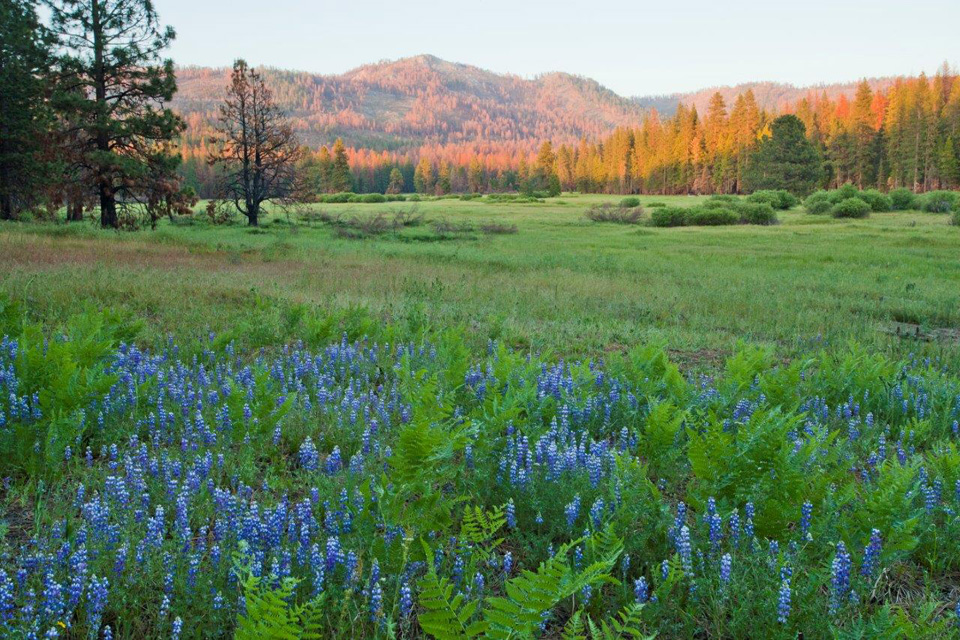
by Spreck | Mar 9, 2025 | Uncategorized
The Restore Hetch Hetchy board and staff will be visiting Hetch Hetchy April 26-27. Early spring, just after Earth Day and John Muir’s birthday, is a beautiful time of year and we’d love to have you join us.
We are planning three events. Come to one, two, or (best yet) all three. But let me know so we can plan and send you details – email spreck@hetchhetchy.org. (If you have already RSVPed, no need to do so again.)

Ackerson Meadow – NPS photo
Here is our schedule:
- On Saturday, April 26, at 2:30 we will meet at Ackerson Meadow, on Evergreen Road about 4 miles from Highway 120. Ackerson Meadow was recently acquired by the National Park Service and was restored a few years ago. We will take a short walk and hear a bit about the process of restoring the meadow.
- On Saturday, April 26, at 5:30, we will convene at the Evergreen Lodge for an informal reception and buffet dinner. This will be outside (the only area that can accommodate a large group), so we will want to dress warmly.
- On Sunday, April 27, we will meet at 9:30 at the picnic tables near the “Chalet” at Hetch Hetchy. We will chat briefly then walk out to Wapama Falls – about 5 miles round trip. Wapama is a unique and spectacular waterfall indeed. The end of April should be a very good time for viewing the falls as well as wildflowers.

In December 2024, the National Park Service (finally) replaced the westernmost bridge at Wapama Falls, making it safer to cross during peak snowmelt.
If you have not seen it, check out Dennis Wyatt’s recent column: Time to Make America’s Parks Accessible again. Wyatt suggests California take over the national parks within the state. It seems unlikely the idea will catch on but its always nice to see outside the box thinking – especially from journalists sympathetic to our campaign.
And we were especially pleased that Wyatt has included many of the same points about lack of access to Hetch Hetchy that we have been making:
- Despite public access being a main tenet of the Raker Act, the City of San Francisco has successfully limited access to the Hetch Hetchy area.
- Its access gate is not open 24 hours as are the other four gated access points to the national park.
- At the same time, fishing for-all-practical purposes is prohibited or even using the water for boating, whether it is a non-polluting electric boat or kayaks.
- San Francisco has also blocked camping at Hetch Hetchy, prevented the expansion of trail systems on the north side including to the top of Hetch Hetchy Dome, and rejected any consideration of whether weighing lodging at Hetch Hetchy is in the public’s interest.
Thanks, Dennis!
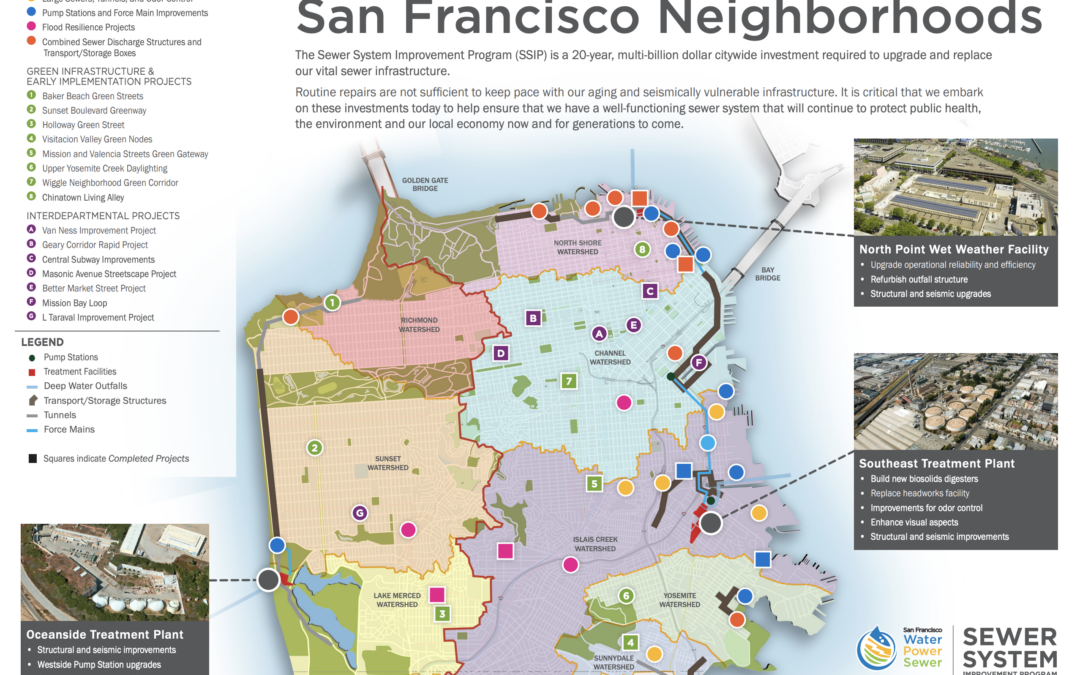
by Spreck | Mar 6, 2025 | Uncategorized
In a 5-4 ruling, the United States Supreme Court ruled that the Environmental Protection Agency exceeded its authority in its efforts to keep San Francisco from dumping raw sewage into the Pacific Ocean. Justice Amy Coney Barrett, surprising some observers by siding with Justices Sotomayor, Kagan and Jackson in dissent, wrote “The entire function of (the provision the EPA seeks to enforce) is to ensure that permitted discharges do not violate state water quality standards. San Francisco’s permit only authorizes discharges that do not degrade water quality below the applicable standard.”.
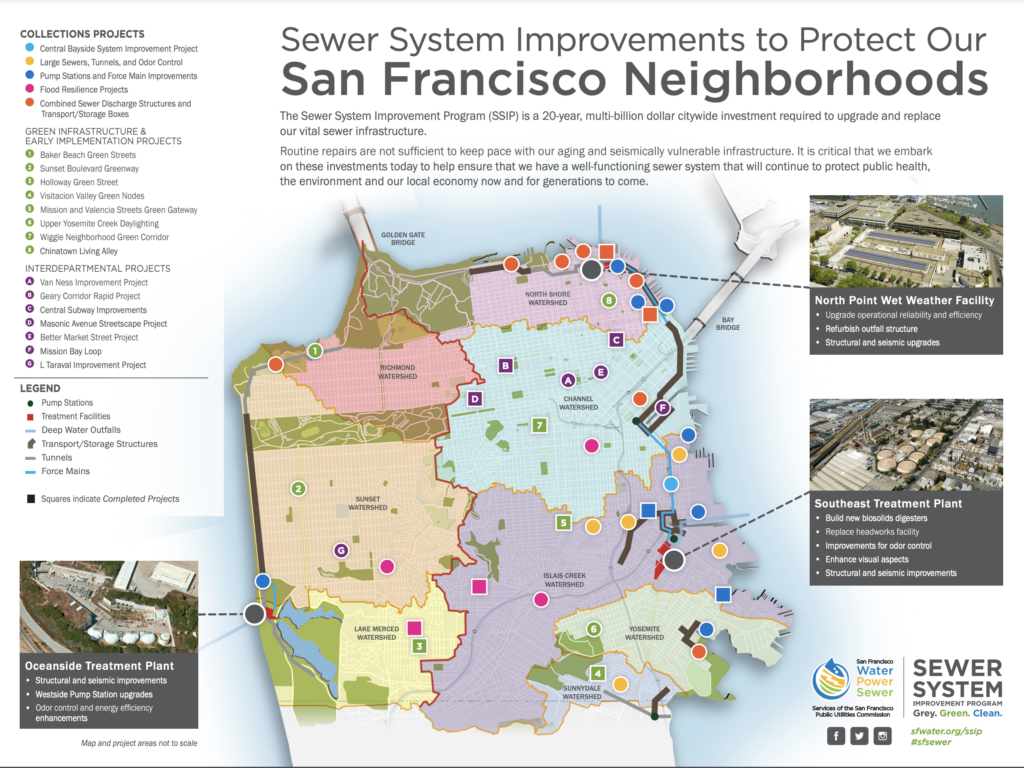
Unlike most west coast cities, San Francisco’s wastewater treatment combines storm water and sewage. During periods of heavy rain, the treatment plants can be overwhelmed.
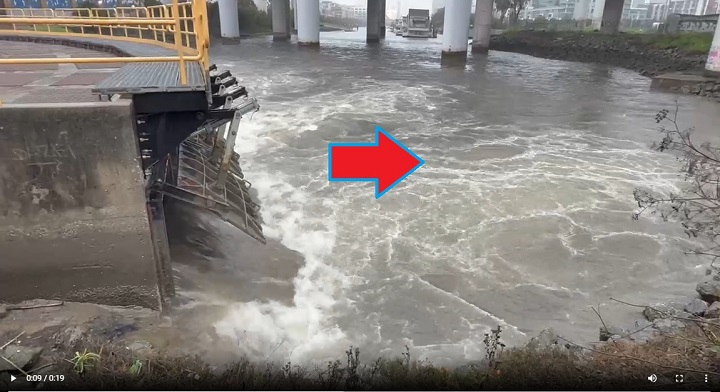
A sewage spill at San Francisco’s Southeast WTP after 2.66 inches of rain fell on February 4, 2025. (Video captured by the SF Baykeeper)
The ruling does not mean that the Environmental Protection Agency lacks authority to require San Francisco to reduce its spills. But EPA does have to find a better way of writing its regulations.
EPA’s regulation took aim at the water quality of the ocean, rather than what San Francisco was actually dumping into it. We hope Justice Alito’s claim is correct that “The agency has adequate tools to obtain needed information from permittees without resorting to end-result requirements,” and that, if so, the EPA will develop robust criteria to protect the ocean and the bay that will pass legal muster. The SFPUC’s press release is posted online.
We wish this case had never gone to the Supreme Court. The San Francisco Board of Supervisors urged the SFPUC to settle with EPA rather than ask the Supreme Court to diminish its authority but was ignored. Even if San Francisco makes system improvements and becomes a better steward of its wastewater, what might the precedent of this decision be in other cities across the United States?
Ironically, the Supreme Court’s ruling coincides with the announcement of San Francisco’s “NEWEST OCEANFRONT PARK“, only 1/2 mile from its Oceanside Water Treatment Plant.
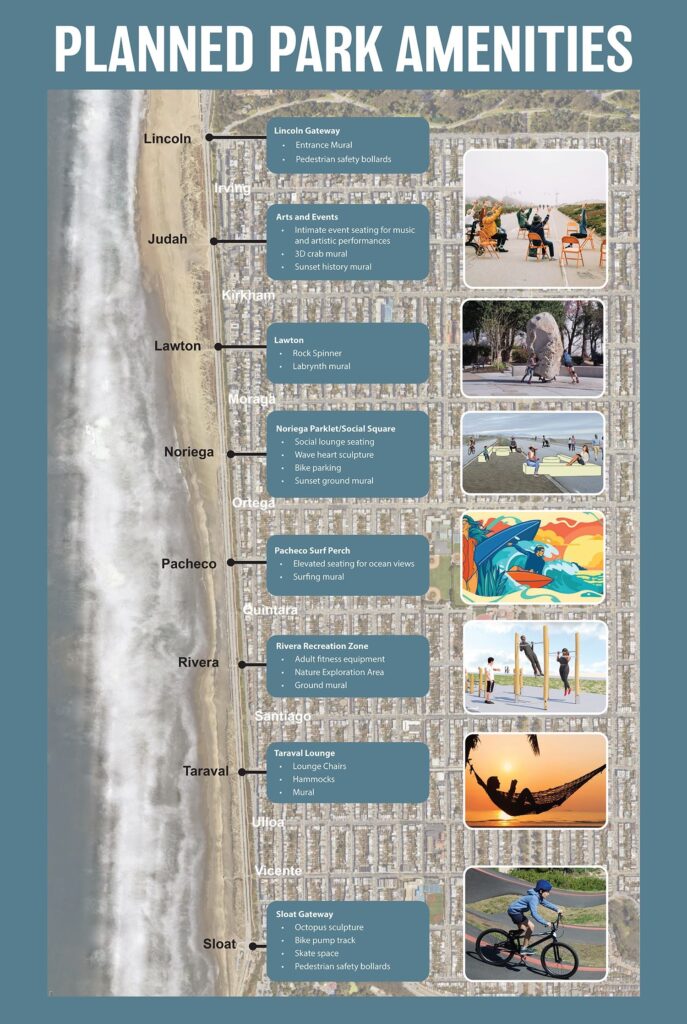
Restore Hetch Hetchy remains focused on improving San Francisco’s water supply system so Yosemite’s Hetch Hetchy Valley can be returned to its natural splendor. But it’s impossible to ignore the sewage spills in the bay and ocean that threaten both people and wildlife.
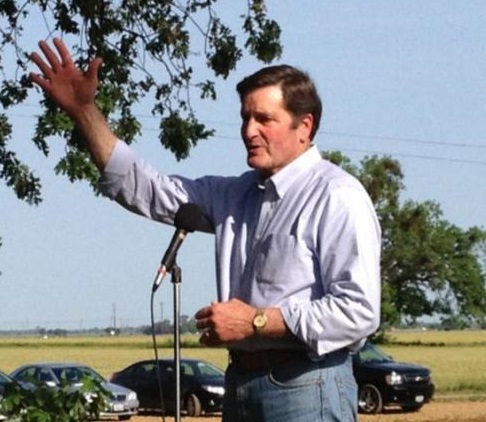
by Spreck | Mar 1, 2025 | Uncategorized
Our campaign to restore Hetch Hetchy is deeply rooted in the sanctity of our national parks, that Hetch Hetchy’s damming was a singular historic insult, a wrong that must be made right.

Hetch Hetchy in 1908 (Photo Matt Ashby Wolfskill)
Recent massive widespread terminations of Rangers are a modern day insult, as we realize our wildly popular national parks cannot handle visitors without adequate staff, especially with the busy summer season approaching.
Let’s restore Hetch Hetchy. And let’s ensure we have enough full-time and seasonal Rangers to protect our lands as we welcome visitors, and let’s treat those Rangers with the dignity they deserve.
Hetch Hetchy’s place in history extends beyond the flooding of the valley. Less than three years after sacrificing the valley to a dam and reservoir for San Francisco, Congress passed the National Park Service Act – legislation that created the National Park Service itself and helped to insure that our parks would be better protected from parochial interests in the future.
So the story of Hetch Hetchy is directly linked to today’s Rangers.
As President Franklin D. Roosevelt explained, “There is nothing so American as our national parks … the fundamental idea behind the parks … is that the country belongs to the people, that it is in process of making for the enrichment of the lives of all of us.”
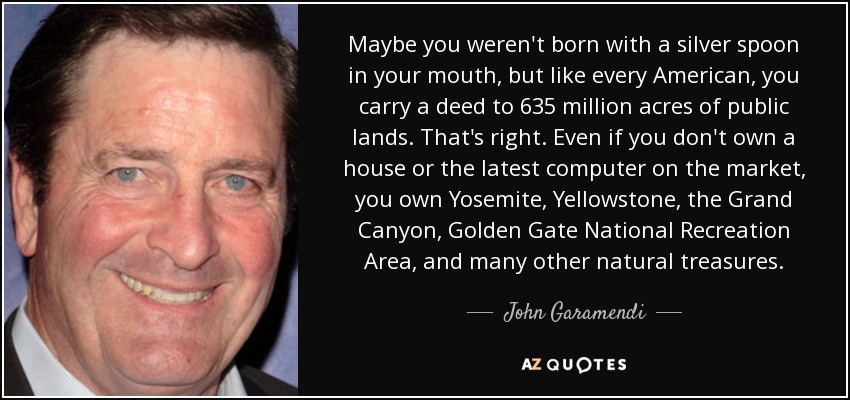
In a 2005 editorial opinion for the San Francisco Chronicle, Congressman John Garamendi wrote “As we encourage economic growth in California, we should also make a commitment to cherish and sustain our spectacular natural heritage. I can think of no better way than restoring Hetch Hetchy Valley for our children and grandchildren.
Yes, our national parks belong to all of us – a venerable part of our identity that dates back to Abraham Lincoln’s signing of the Yosemite Grant in 1864 “upon the express conditions that the premises shall be held for public use, resort, and recreation [and] shall be inalienable for all time.”
Yet these conditions are threatened today as the Department of Government Efficiency has terminated positions in Yosemite and other parks from thousands of miles away with disregard to staffing needs and job performance. As NBC notes, fewer employees could mean longer entry lines, dirty bathrooms and unsafe conditions for hikers and campers.
There’s hope that DOGE’s chainsaw will be scaled back. We are grateful to the 22 Senators who wrote Secretary Burgum asking him to “immediately reissue seasonal employment offers”. And the Associated Press has reported that at least some employee terminations have in fact been rescinded.
Still, what happens next is uncertain. 2025 will be an interesting year at Yosemite National Park. Will a new Superintendent be hired? Will a reservation system be in place. Will there be staff to open the Tuolumne Meadows Campground? How much public access will be allowed at Hetch Hetchy? Inquiring minds want to know, but we will have to wait.
Let’s get Yosemite and all our parks back to their “normal” operating status. Then let’s return to what needs to be done to restore Hetch Hetchy Valley to its natural splendor
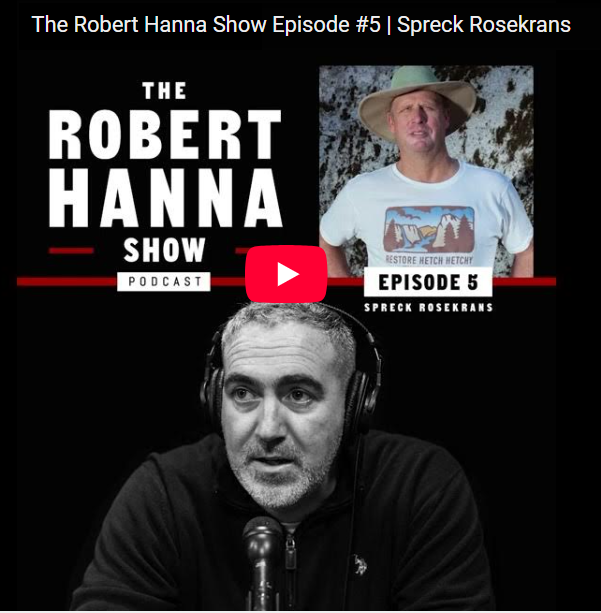
by Spreck | Feb 22, 2025 | Uncategorized
We had a chance to sit down and record a podcast with perhaps our most passionate ally – Robert Hanna, John Muir’s great-great-grandson.
We covered the gamut – water system solutions, San Francisco’s recalcitrance, how the valley would be restored, and what it would mean for future generations. Robert notes we have an opportunity before us right now and he is actively involved in generating support among decisionmakers.
Robert has posted our discussion on Youtube, Spotify and Apple. Please listen, and let us know what you think.

Robert was the interviewer, but that did not stop him from pointing out that the damming of Hetch Hetchy Valley is the greatest historic wrong ever perpetrated in our national parks. He also takes offense, as did the San Francisco Standard, that the City’s “elites” are able to stay in special cabins while ordinary park visitors are not even allowed to camp at Hetch Hetchy..
We both agree that the opportunity for another Yosemite Valley is unparalleled, and there is an opportunity to get it right. With proper planning, we can welcome visitors to a restored valley while avoiding traffic and congestion.
Robert has good political instincts and he is media savvy. And passion seems to run in the blood of the Muir-Hanna family. It’s great to have him on our team.
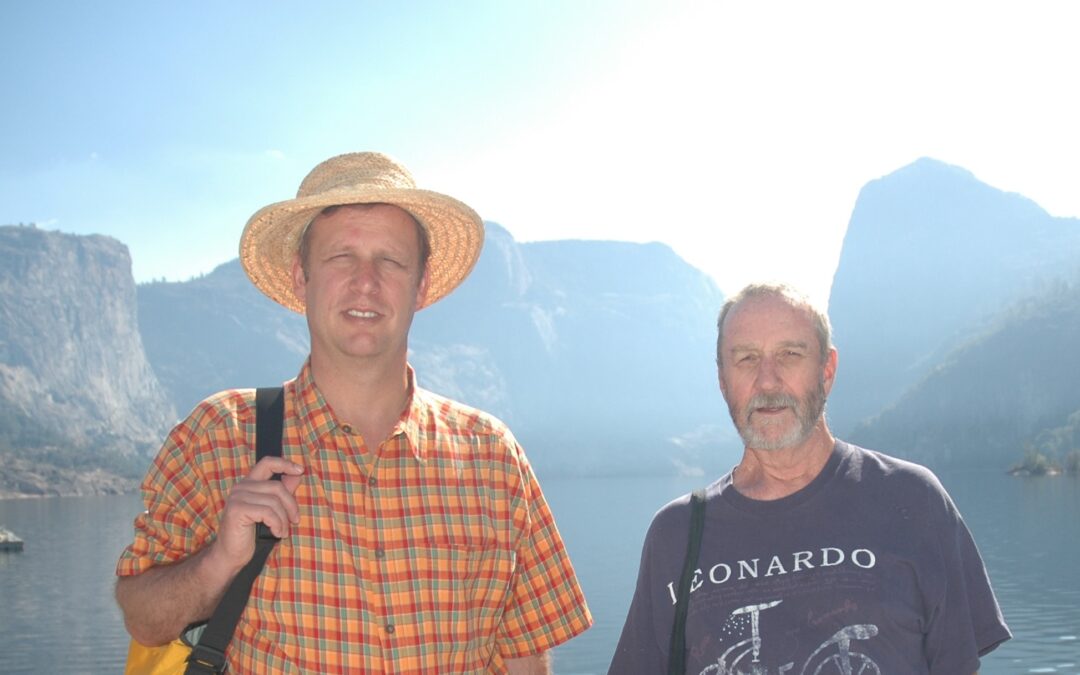
by Spreck | Feb 21, 2025 | Uncategorized
“Retired guy” was George Miller’s way of answering the phone. He and his partners had been successful in the investment business and had agreed to retire when they made a certain amount of money. George boasted he was the only one who kept that promise – after which he moved on to a series of civic and philanthropic ventures.
George “not the Congressman” Miller (how he often introduced himself) passed away in early February. We’ll remember him not only for what he did for Restore Hetch Hetchy but also for the fun and special person that he was – as explained in Carl Nolte’s Sunday column in the San Francisco Chronicle: This little-known man made life a lot better for many Californians.
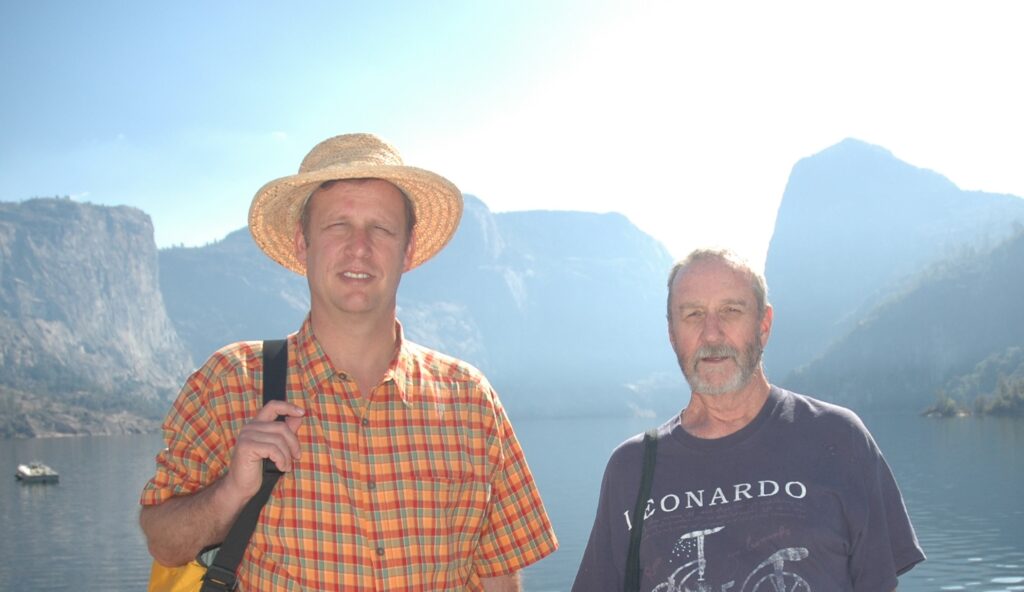
George Miller (right) at Hetch Hetchy in 2004 with Spreck Rosekrans (current RHH Executive Director, then an Analyst at the Environmental Defense Fund) Photo: Tim Connor
We knew George, albeit not well, in 2002 when we hosted Restore Hetch Hetchy’s first real public event – wine, cheese and a slide show at Galen Rowell’s gallery in Emeryville. George had been a supporter of various California River campaigns, and we were pleased when he sent us an RSVP that he’d be attending.
Coincidentally, George, recently retired, had just spent a year at UC Berkeley’s Bancroft Library cataloging the papers of Michael Maurice O’Shaughnessy – San Francisco’s Chief Engineer who built the dam, now named after him, at Hetch Hetchy. How would he feel about eliminating that dam?

The Christmas Card Michael O’Shaughnessy sent to his wife in 1919 (the dam was completed in 1923). George believed he regretted destroying the valley noting that O’Shaughnessy had told his wife they had spent too much money to turn back.
First of all, how many people take on such a laborious task immediately after retirement? George was proud of his work, although he did say that the sinus infections he got from the collection’s dusty papers almost killed him.
Second of all, how likely would George be to support getting rid of the dam, after he worked so hard to preserve the legacy of the guy who’d built it? Two answers here: (1) After reading letters O’Shaughnessy had written to his wife, George was convinced he thought damming the beautiful valley was a mistake, and (2) George thought, rather than removing the dam, it would be easier to leave it in place, drill a whole through the bottom to let the river pass through, and build the “Dam Hotel” on top.
George showed up at Galen Rowell’s gallery early that April evening in 2002, as volunteers were uncorking wine bottles and checking the projection system. He was a show up early kind of guy. The room eventually filled, people mingled, presenters spoke.
The next day George sent Restore Hetch Hetchy its biggest check ever. Founder and Executive Director Ron Good was ecstatic.
George then talked with Tom Graff, Regional Director at the Environmental Defense Fund. George offered to fund a study to make the case for restoration – an effort that would be authored by staff but include comprehensive research, attached as appendices, that was compiled by mainstream consultants. Of course the environmentalists would say restoration was feasible, but it would mean so much more if the engineers at Schlumberger and Eisenberg, Olivieri & Associates and as well as the attorneys at Somach, Simmons & Dunn agreed
The result was Paradise Regained: Solution for restoring Yosemite’s Hetch Hetchy Valley. Paradise Regained, published at the same time as a report by Sarah Null and Jay Lund of UC Davis, encouraged Assembly Members Lois Wolk and Joseph Canciamilla to write Governor Arnold Schwarzenegger who then authorized the State of California to investigate restoration. Schwarzenegger’s enthusiasm for restoring Hetch Hetchy faded after he lost unrelated special election initiatives in 2005, but the effort put the opportunity for restoration in the public eye where it has been ever since. Thank you, George!

George Miller, flanked by EDF’s Nancy Ryan and Tom Graff, tours Hetch Hetchy in San Francisco’s boat. Until the valley is restored, Restore Hetch Hetchy supports boating on the reservoir, albeit not with gas-powered engines.
During the course of researching Paradise Regained, we took a trip to Hetch Hetchy with George. To our surprise, San Francisco PUC General Manager Pat Martel allowed us to tour the reservoir in San Francisco’s boat. The boat driver was mightily amused that he was offering a tour to people who wanted to restore the valley and was happy to share stories of badly behaving San Francisco officials at Hetch Hetchy as long as we promised not to repeat them (we haven’t said a word, Senator Kopp).
Early Restore Hetch Hetchy strategy sessions and dinners were held at Sam’s – the classic San Francisco restaurant which George eventually bought to keep from closing. Kibbitzing on strategy, George would gently ask “Are you trying to make a point or are you trying to make a difference?” if anyone was getting high and mighty about calling out hypocrisy at San Francisco’s City Hall.
It was also at Sam’s that we lobbied Judge (and noted environmentalist) William Newsom, father of not-yet-elected Mayor Gavin, to convince his son to support restoration. We’ve had respectful but unfruitful meetings with Gavin – now California’s Governor.
George engaged in other numerous endeavors for the public good. He was an active board member of SPUR — the San Francisco Bay Area Planning and Urban Research Association. With his wife, George initiated a microloan program that helped many thousands of Viet Namese farmers lift themselves out of poverty. And George was especially proud to endow Miller Scholars at UC Berkeley, where he had earned an MBA at the Haas School of Business.
George was a proud and eccentric philanthropist. He said he wanted to live until 80, give all his money everything away, have a double vodka, and die broke. He lived to be almost 90, and I hope he enjoyed that double vodka before he passed.















